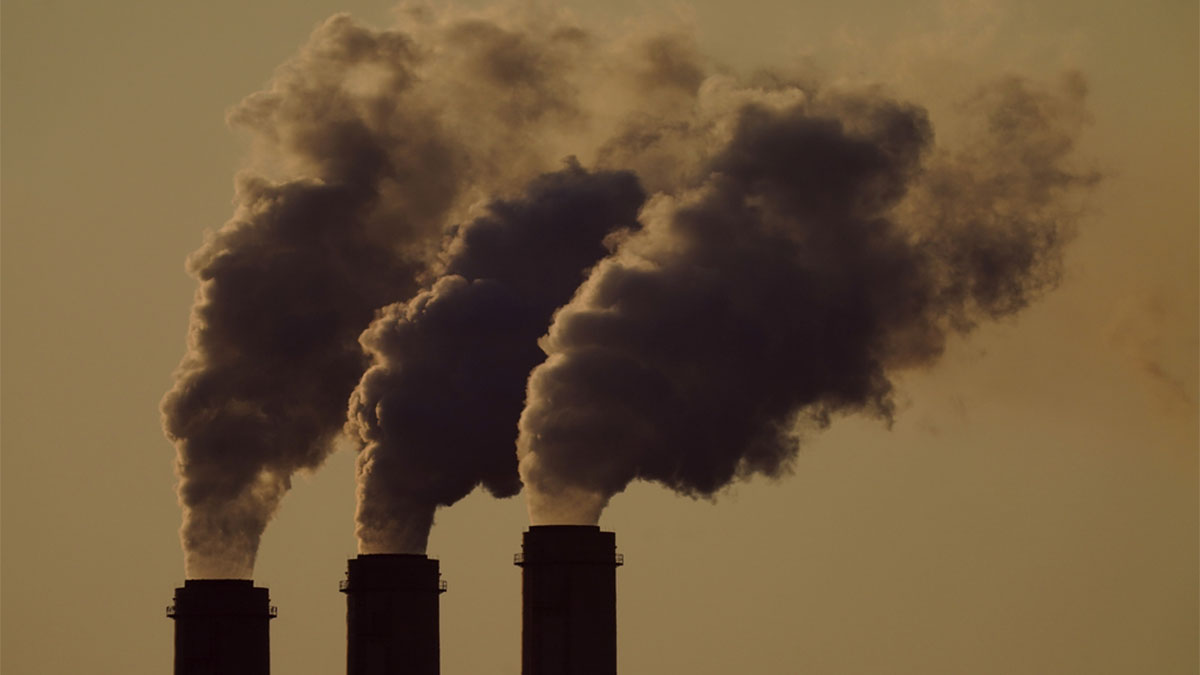In 2023, India’s GDP growth contributed to an increase of around 190 million tonnes (Mt) of emissions. A weak monsoon drove up electricity demand while reducing hydroelectric output, leading to greater reliance on fossil fuels for power generation. This shift not only accounted for about one-quarter of the emissions increase but also intensified energy consumption across key industrial sectors including manufacturing and logistics.
Manufacturing, heavily dependent on coal-fired power and industrial processes, saw emissions rise, with steel, cement and aluminum production estimated to generate 20% of the national total. Increased industrial activity also fueled demand for transportation and logistics, which, driven by an extensive network of road and rail freight, contributed about 14% of India’s GHG emissions.
As per The International Energy Agency Report, Road transport generates 12% of India’s energy-related CO₂ emissions while playing an essential role in generating urban air pollution. Scientific calculations indicate that road transport emissions will potentially rise to double their current levels by 2050 under existing conditions. While India is making strides toward clean energy, both manufacturing and logistics remain among the hardest sectors to decarbonize. The 2024 Biennial Update Report (BUR) submitted to the UNFCCC highlights that while emissions have decreased in some areas, these sectors still require focussed policies to accelerate reduction efforts.
The Union Budget 2025 is a key opportunity to introduce policies and incentives to cut industry emissions. Strengthening regulations, promoting innovation, and encouraging collaboration can accelerate India’s shift to a low-carbon economy. Aligning financial incentives with sustainability goals will drive lasting economic and environmental benefits.
Budget 2025: Key Measures to reduce the carbon footprint
- Incentivizing Low-Carbon Manufacturing
As Reported by the Indian Brand Equity Foundation, Indian conglomerates are planning to invest US$ 800 billion in green hydrogen, clean energy, semiconductors, and electric vehicles (EVs). This massive investment could play a pivotal role in driving the country’s transition to a low-carbon economy. Financial incentives for emission reductions, research and development grants, and preferential lending for renewable energy adoption could further support these efforts.
The government initiated the Green Hydrogen Mission intending to produce 5 million metric tonnes of green hydrogen annually by 2030. Thus, expanding subsidies for green hydrogen adoption in heavy industries is expected to be a key focus in the Union Budget 2025.
Impact Shorts
More Shorts- Addressing Emissions in Hard-to-Abate Industries
In the upcoming budget, the government should consider performance-based incentives (PLI) to reward industries that use carbon capture, utilization, and storage (CCUS) technologies for lowering their hard-to-reduce entity emissions such as power plants and steel, and cement facilities. Additionally, the expansion of the Perform Achieve and Trade (PAT) scheme into new sectors will drive industrial sectors to exceed basic energy efficiency requirements through new emission reduction programs.
- Reducing Logistics and Freight Emissions
The sector generating logistics adds substantial amounts to India’s environmental footprint because transportation operations depend on traditional fuel sources. In the upcoming Budget 2025, the government should plan to support fleet electrification by implementing environmental incentives while promoting alternative fuels including biofuels hydrogen, and liquefied natural gas (LNG) for extended-haul transportation. Strengthening multimodal logistics parks and digital freight management platforms could further optimize cargo movement and minimize emissions.
Logistics firms receiving tax benefits or grants can use them for EV fleet development battery-swapping infrastructure establishment and fuel-efficient system investment. The conversion to cleaner transportation needs robust highway and freight corridor charging stations to succeed.
Given projected road transport emissions to double by 2050 the necessary policies must work toward minimizing heavy freight dependency on diesel while encouraging electric and alternative fuel vehicle adoption. Improved infrastructure plans for railway freight corridors together with public transportation projects will greatly reduce the strain on road-based emissions.
- Encouraging Renewable Energy Adoption in Industrial Operations
To decarbonize manufacturing, the budget 2025-26 may introduce enhanced production-linked incentives (PLI) for solar, wind, and hybrid energy projects. Financial incentives need to be increased because numerous manufacturing facilities continue using captive coal power which requires them to transition to solar rooftops and hybrid energy solutions.
Renewable Energy Certificates (RECs) have been expanded to offer industries a market-based method to fulfill their clean energy requirements.
Budget 2025 may boost the adoption of tools like the Freight Greenhouse Gas Calculator to help businesses track emissions, alongside supporting digital platforms for carbon accounting and ESG reporting. Additionally, policy changes are expected to align India’s carbon market with global standards, enabling carbon trading and enhancing industry accountability through stronger disclosures under the Business Responsibility and Sustainability Reporting (BRSR) framework.
Conclusion
The upcoming 2025 Union Budget will critically shape how India reduces its manufacturing and logistics carbon emissions. Through budget-supported green manufacturing incentives coupled with logistics decarbonization initiatives renewable energy promotion and digital tool adoption, the budget powers substantial systemic changes toward India’s prolonged sustainability targets.
With the right mix of financial support, regulatory reforms, and market-based mechanisms, India can accelerate its transition toward a low-carbon economy while maintaining industrial growth and competitiveness. The policies introduced in this budget will be instrumental in determining the pace and scale of India’s carbon reduction journey.
The author is Co-founder & CEO of Snowkap. Views expressed in the above piece are personal and solely those of the author. They do not necessarily reflect Firstpost’s views.


)

)
)
)
)
)
)
)
)



